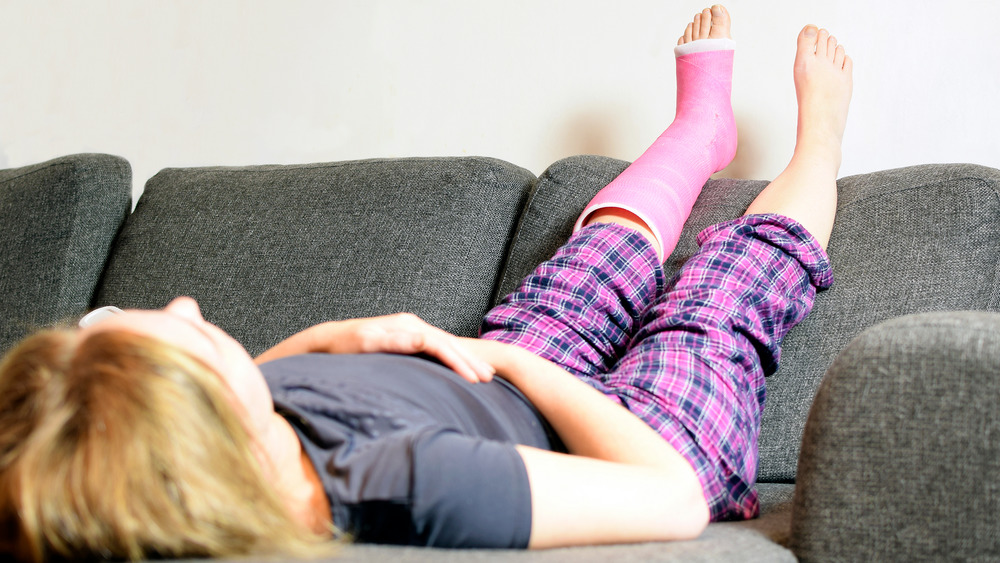Elevating Your Legs Has More Benefits Than You Think
Though it certainly feels good to put your feet up after a long day, elevating your legs can also have a number of health benefits (via Healthline). For starters, when you're sitting or standing, your body must work harder against gravity to return oxygen-depleted blood to your heart. But when your legs are raised above the level of your heart, gravity is now on your side and blood flow in the legs is improved. In the same way, gravity can help excess fluid drain away more effectively when legs are elevated, which can reduce swelling. This can be especially helpful during pregnancy, after surgery, or while healing from an injury or certain infections that can cause swelling of the legs, such as cellulitis.
Elevating your legs can also help prevent or ease conditions that affect the veins. Varicose veins, for example, occur when blood pools in the veins, causing them to stretch or twist, according to the Mayo Clinic. While any vein may be affected, the varicose veins are most common in the legs, as standing upright increases the pressure in the veins in the lower extremities. Another condition, deep vein thrombosis, happens when a blood clot forms in one of the deep veins of the leg, blocking blood flow and leading to swelling and pain. If the clot breaks off, it can move to the lungs causing a pulmonary embolism. Elevating the legs can relieve this pressure and allow blood to flow more easily.
How to elevate your legs
Parameters around how long and how often legs should be elevated will depend on the condition you're trying to address. If you have an underlying health condition, speak to your health care provider about a treatment plan and if elevating your legs fits into it. Your doctor may have specific instructions and in certain instances, may not recommend elevating your legs.
If you've gotten the all-clear, make sure you have the right support for your body. Sit or lie down in a comfortable position on a surface that provides good support for your back. Your legs need to be elevated above your heart so you might consider a pillow to prop them up. A foot rest, foot stool, or ottoman may also be used (via Michigan Medicine).
Other tips to improve blood flow to the legs include walking every day, swimming or bicycling, maintaining a healthy weight, and doing leg exercises, such as rotating feet at the ankles in a circular motion. Avoiding long periods of sitting or standing and avoiding crossing your legs while sitting can also improve blood flow.


